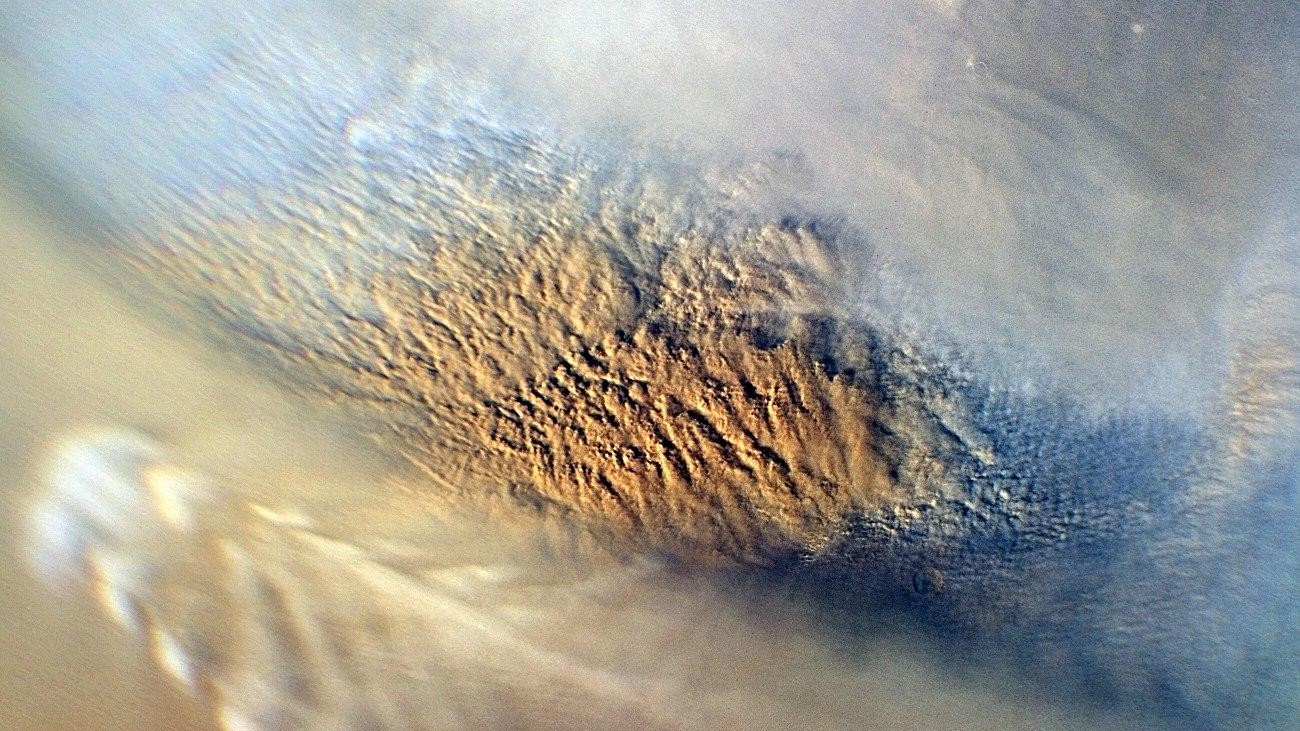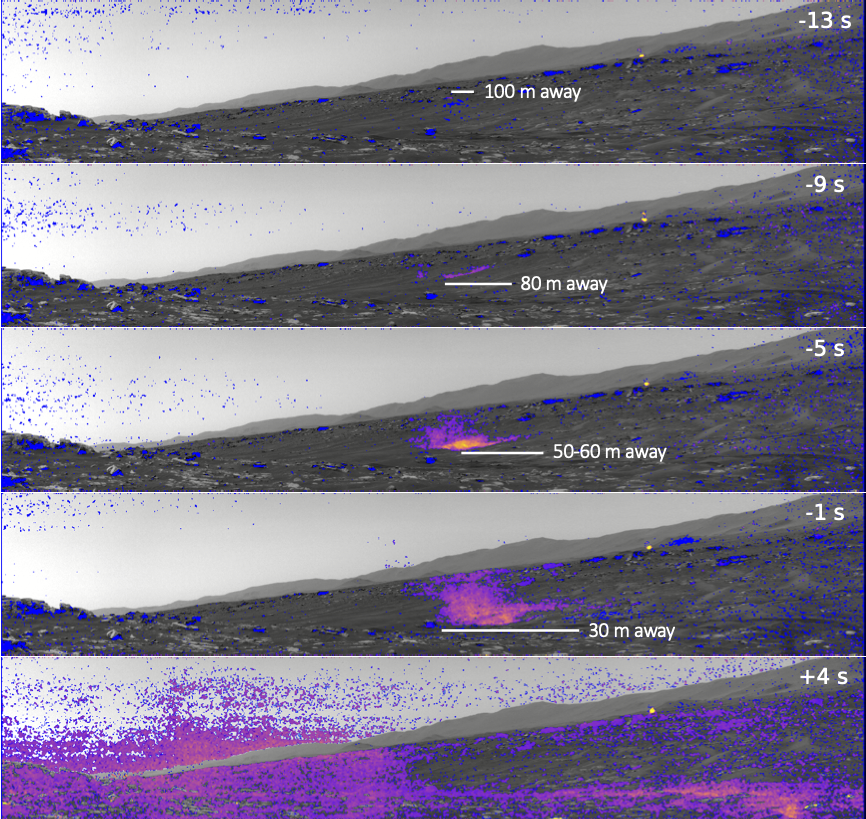Listen to a Martian dust storm engulf the Perseverance rover in eerie, world-first audio recording
An unprecedented audio recording could reveal key details about extreme weather on the Red Planet.

A towering dust storm that engulfed the Mars Perseverance rover in September 2021 was a colossal 390.4 feet (119 meters) tall, the first-ever audio recording of a dust devil on the surface of Mars reveals.
The recording, an analysis of which was published Tuesday (Dec. 13) in the journal Nature Communications, also reveals brand-new information about how these short-lived phenomena move dust around on the Red Planet.
"We can actually hear the noise of particles impacting the rover," study lead author Naomi Murdoch, a physicist at the National Higher French Institute of Aeronautics and Space (ISAE-SUPAERO) at the University of Toulouse in France, told Live Science. "The sound of these impacts allows us to count how many particles were in the vortex."
It's the first time such a measurement has ever been made on Mars, Murdoch added.
The importance of dust
Dust is omnipresent on Mars' surface and in the air. Its movement both influences — and is influenced by — the weather and climate on Mars. Understanding dust movements is important for modeling the Martian climate, Murdoch said, and it's also important for planning missions to the planet. For example, Perseverance's wind sensors have been damaged by dust, and the InSight Lander is wrapping up operations due to dust accumulating on its solar panels, limiting the amount of power available for scientific monitoring.
Dust devils happen when warm air near the ground rises and rotates, lifting dust with it. The Jezero crater, where the Perseverance rover is exploring, is prime territory for dust devils. According to Murdoch and her colleagues, the rover's Mars Environmental Dynamics Analyzer (MEDA), which monitors environmental features like temperature, dust, humidity and wind, have captured at least 91 dust devils near the rover.
But on Sept. 27, 2021, something unprecedented happened: A dust devil went right over the rover. Not only did MEDA's instruments gather data during the impact with the vortex, Perseverance's Navigation Cameras captured imagery, and its SuperCam mic recorded the sound of the event.
Sign up for the Live Science daily newsletter now
Get the world’s most fascinating discoveries delivered straight to your inbox.

Towering vortex
Combining these three sources of data, Murdoch and her team discovered that the storm was 82 feet (25 m) across, almost 10 times wider than the rover. Standing at 390.4 feet , the tornado was roughly as tall as a 40-story building. The towering storm moved at 11.8 mph (19 kilometers per hour) and its peak winds hit 24.8 mph (40 km/h).
"However, on Mars, the atmosphere is much thinner than on Earth," Murdoch said. "This means that, even if the wind speed is high, due to the small number of particles in the Martian atmosphere, the force of the wind is much smaller than on Earth."
In a typical dust devil, most of the dust resides in the walls of the vortex. But the dust hit the rover in three distinct bursts — two walls, and a cloud of dust in the center of the dust devil. The dust accumulation inside the dust devil was an unusual finding, Murdoch said.
"Today we still don't understand exactly how dust is lifted from the surface of Mars, yet this is a crucial part of modeling both dust devils and dust storms," she said. "We have demonstrated that with the microphone we can directly observe the process of dust lifting and characterize the conditions under which such lifting occurs."

Stephanie Pappas is a contributing writer for Live Science, covering topics ranging from geoscience to archaeology to the human brain and behavior. She was previously a senior writer for Live Science but is now a freelancer based in Denver, Colorado, and regularly contributes to Scientific American and The Monitor, the monthly magazine of the American Psychological Association. Stephanie received a bachelor's degree in psychology from the University of South Carolina and a graduate certificate in science communication from the University of California, Santa Cruz.










